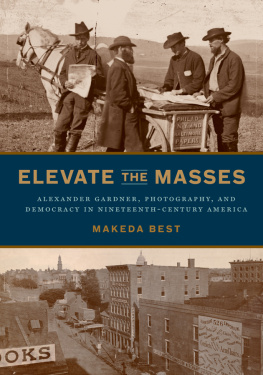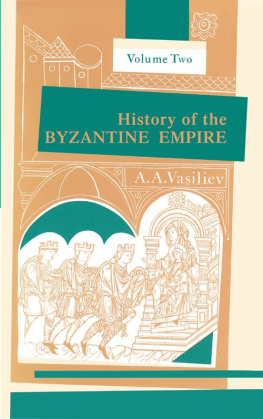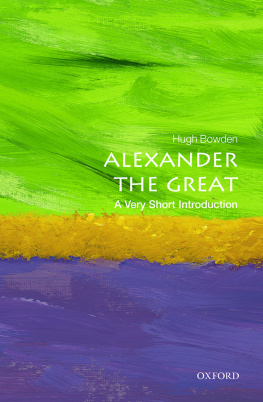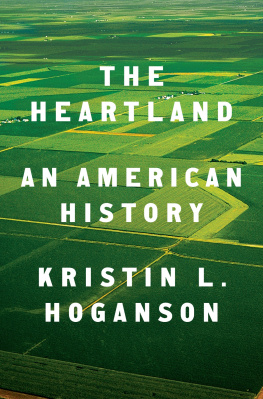Sherow - Railroad Empire across the Heartland: Rephotographing Alexander Gardners Westward Journey
Here you can read online Sherow - Railroad Empire across the Heartland: Rephotographing Alexander Gardners Westward Journey full text of the book (entire story) in english for free. Download pdf and epub, get meaning, cover and reviews about this ebook. year: 2014, publisher: University of New Mexico Press, genre: Romance novel. Description of the work, (preface) as well as reviews are available. Best literature library LitArk.com created for fans of good reading and offers a wide selection of genres:
Romance novel
Science fiction
Adventure
Detective
Science
History
Home and family
Prose
Art
Politics
Computer
Non-fiction
Religion
Business
Children
Humor
Choose a favorite category and find really read worthwhile books. Enjoy immersion in the world of imagination, feel the emotions of the characters or learn something new for yourself, make an fascinating discovery.

- Book:Railroad Empire across the Heartland: Rephotographing Alexander Gardners Westward Journey
- Author:
- Publisher:University of New Mexico Press
- Genre:
- Year:2014
- Rating:5 / 5
- Favourites:Add to favourites
- Your mark:
- 100
- 1
- 2
- 3
- 4
- 5
Railroad Empire across the Heartland: Rephotographing Alexander Gardners Westward Journey: summary, description and annotation
We offer to read an annotation, description, summary or preface (depends on what the author of the book "Railroad Empire across the Heartland: Rephotographing Alexander Gardners Westward Journey" wrote himself). If you haven't found the necessary information about the book — write in the comments, we will try to find it.
Sherow: author's other books
Who wrote Railroad Empire across the Heartland: Rephotographing Alexander Gardners Westward Journey? Find out the surname, the name of the author of the book and a list of all author's works by series.
Railroad Empire across the Heartland: Rephotographing Alexander Gardners Westward Journey — read online for free the complete book (whole text) full work
Below is the text of the book, divided by pages. System saving the place of the last page read, allows you to conveniently read the book "Railroad Empire across the Heartland: Rephotographing Alexander Gardners Westward Journey" online for free, without having to search again every time where you left off. Put a bookmark, and you can go to the page where you finished reading at any time.
Font size:
Interval:
Bookmark:
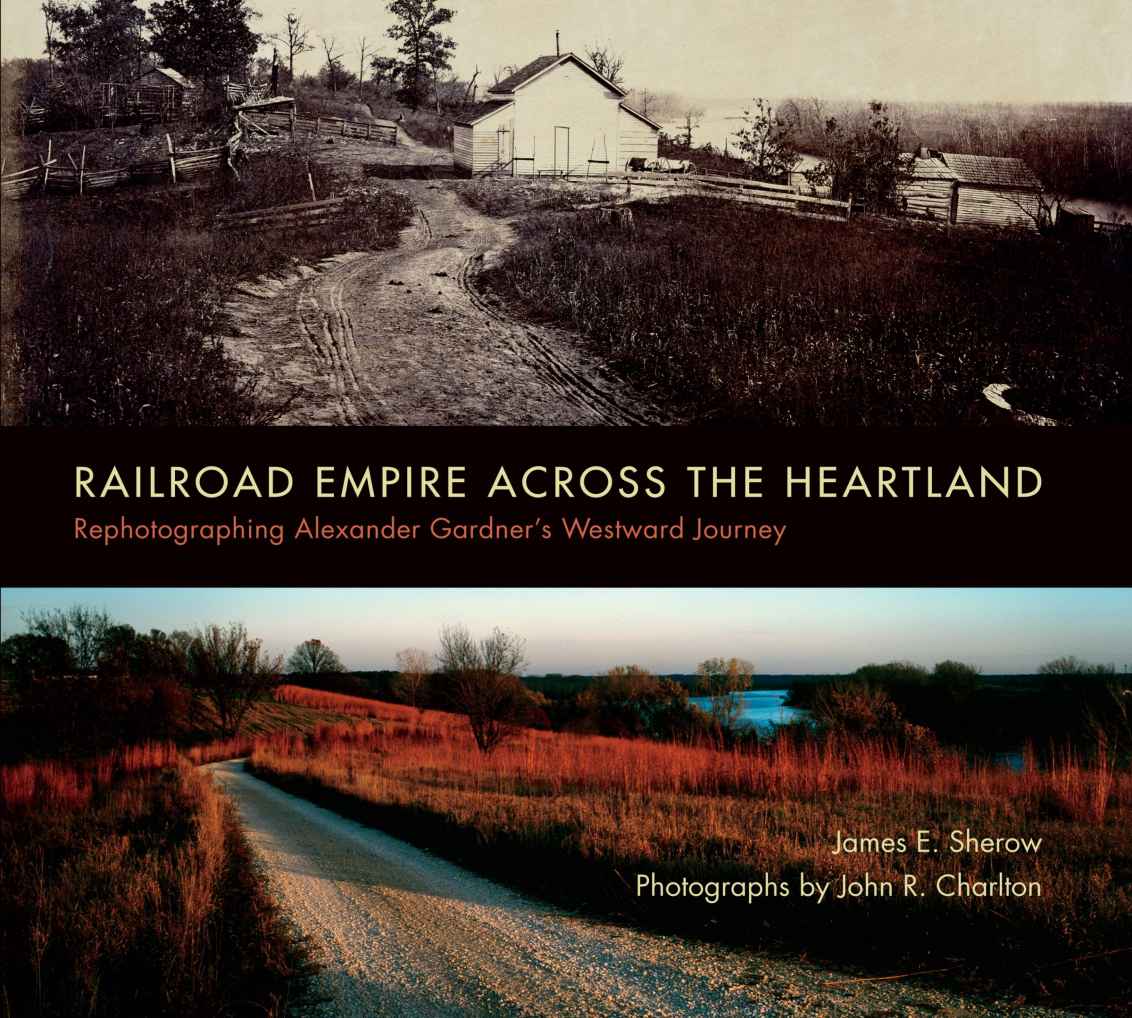
RAILROAD EMPIRE ACROSS THE HEARTLAND

Keeler 1867 Map of Kansas
Rephotographing Alexander Gardners Westward Journey
James E. Sherow
Photographs by John R. Charlton

2014 by the University of New Mexico Press
All rights reserved.
Published 2014
Printed in South Korea
19 18 17 16 15 14 1 2 3 4 5 6
The Library of Congress has cataloged the printed edition as follows:
Sherow, James Earl.
Railroad empire across the heartland : rephotographing Alexander Gardners westward journey / James E. Sherow ; [photographs by] John R. Charlton.
pages cm
Includes bibliographical references and index.
ISBN 978-0-8263-5509-6 (paperback : alkaline paper) ISBN 978-0-8263-5510-2 (electronic)
1. West (U.S.)History18601890Pictorial works. 2. Gardner, Alexander, 18211882TravelWest (U.S.) 3. Frontier and pioneer lifeWest (U.S.)Pictorial works. 4. RailroadsWest (U.S.) History19th centuryPictorial works. 5. United StatesTerritorial expansionPictorial works. 6. West (U.S.)Pictorial works. 7. Repeat photographyWest (U.S.) 8. Landscape photographyWest (U.S.) I. Charlton, John R. II. Title.
F594.S55 2014
978.02dc23
2013049089
Cover photographs: Detail of Indian Farm on the Delaware Reservation, Kansas (1867), by Alexander Gardner, courtesy J. Paul Getty Museum; and Indian Farm on the Delaware Reservation, Kansas (1993), courtesy John R. Charlton.
In 1934, Robert Taft, a chemistry professor at the University of Kansas and the president of the Kansas State Historical Society, delivered an address titled A Photographic History of Early Kansas. On that occasion, Taft celebrated the enormous accomplishments of famous Civil War and western photographer Alexander Gardners work in depicting towns, scenes and institutions of Kansas in 1867, which constituted the most valuable, historically, of all the fifteen thousand photographs possessed by the historical society. Taft also noted how Gardners photographs could serve as a baseline for depicting landscape changes. Taft himself possessed a series of photographs of Lawrence, Kansas, taken over a sixty-five-year time span, many from nearly the same vantage points as Gardners 1867 photographs. Beginning with Gardners photographs, Taft observed that each succeeding photograph of the same location revealed a remarkable spread of trees covering the city. He believed that if there were available photographs of such Kansas localities as the Gardner series taken at more or less regular intervals, then such rephotography would graphically reveal not only the structural and social development of the town and of the state, but also depict in unmistakable manner the growth of physical features. Beginning in 1993, John R. Charlton took up Tafts charge to rephotograph Gardners work.
John Perry, the president of the Union Pacific Railway Company, Eastern Division (UPED), had hired Gardner to photograph the accomplishments of his company in 1867. Gardners work represents an incredible, arduous undertaking. He took imperial photographs, so called because each glass plate measured 16 20 inches. He used the wet collodion process to create glass negatives. Collodion was a highly flammable, sticky, clear gel that Gardner used to coat glass plates that he then dipped into an emulsion. While still wet, Gardner placed the plate into his camera and exposed the coated glass to light for several seconds to render a negative image. Exposure times varied depending on a variety of factors, such as light, ambient temperatures, and relative humidity, which together determined how the wet plate emulsions interacted with the surrounding air. Gardner used the camera lens cap as his shutter. Immediately upon taking the glass plate out of the camera, Gardner rinsed it with water and fixed the image by dipping the glass plate into a solvent of silver iodide. Afterward, he again rinsed the plate in clear water, dried the plate, and finally coated the plate with varnish. Then he stored the plates in such a way as to protect the glass from breaking or being overly exposed to light in his field wagon, which also served as his darkroom. In short, given the difficulties of photographing the route, Gardner took extraordinary pains to frame his shots to illustrate the growth and spread of agriculture and town building in the state, all of which he did to highlight UPED railroad construction.

Figure 1. Portrait of Alexander Gardner in his Washington, D.C., studio. Courtesy Indiana State Museum and Historic Sites, Corporation, Fort Wayne, Indiana.
Charltons techniques and equipment differ considerably from those Gardner employed. In order to rephotograph Gardners imperial photographs, Charlton used a large-format camera. Beginning in the early 1990s, Charlton used silver film and darkroom techniques to develop his prints. About this same time, digital photography came of age and quickly made film development obsolete. By the end of Charltons undertaking, he was using a digital camera and processing his prints in a Photoshop digital darkroom. In effect, Charlton began photographing with the technology that had replaced Gardners techniques only to end by employing a digital format that replaced his earlier use of silver halide photography.
Gardner also operated a stereographic camera. Gardner employed essentially the same photographic development process to make stereo photographs as was used to develop imperial photographs. The difference was that his stereo camera contained two lenses on the front of the box that produced two separate images on the glass plate. Each image was formed from a slightly different angle, much in the same manner that human eyes capture images and relate the information to the brain. From the glass plates the images were transferred onto a stereoview card that could be placed in a handheld viewer. When these cards were placed in the viewer they produced a three-dimensional effect. In order to rephotograph Gardners stereo series, Charlton used an old Stereo Realist camera that used 35mm film.
Charlton began his own photographic trek across the state with the goal of replicating the same scenes that Gardner had photographed, and this effort required exceptionally careful and exacting effort on Charltons part. He collected high-quality reproductions of Gardners prints from various collections around the country. The unusable mounted photographs on UPED boards ended up in the hands of individuals like Dr. William A. Bell, Gardners fired predecessor and the future business partner of UPED treasurer William J. Palmer. Director Perry had demanded that Palmer fire Bell because of Bells photograph of a mutilated soldiers body at Fort Wallace. Such photographs were bad for fostering the sale of railroad lands in the state. While Palmer replaced Bell with Gardner, in time Palmer and Bell became friends, and Palmer made Bell the physician for the 32nd parallel route expedition to the Pacific Ocean. Consequently, Bell gained access to Gardners UPED mounted photographs and used them to illustrate his book about the UPED surveys that he published in England without any attribution to Gardner. Later his estate auctioned them at Sothebys, and they were then scattered across Europe and America.
Font size:
Interval:
Bookmark:
Similar books «Railroad Empire across the Heartland: Rephotographing Alexander Gardners Westward Journey»
Look at similar books to Railroad Empire across the Heartland: Rephotographing Alexander Gardners Westward Journey. We have selected literature similar in name and meaning in the hope of providing readers with more options to find new, interesting, not yet read works.
Discussion, reviews of the book Railroad Empire across the Heartland: Rephotographing Alexander Gardners Westward Journey and just readers' own opinions. Leave your comments, write what you think about the work, its meaning or the main characters. Specify what exactly you liked and what you didn't like, and why you think so.



